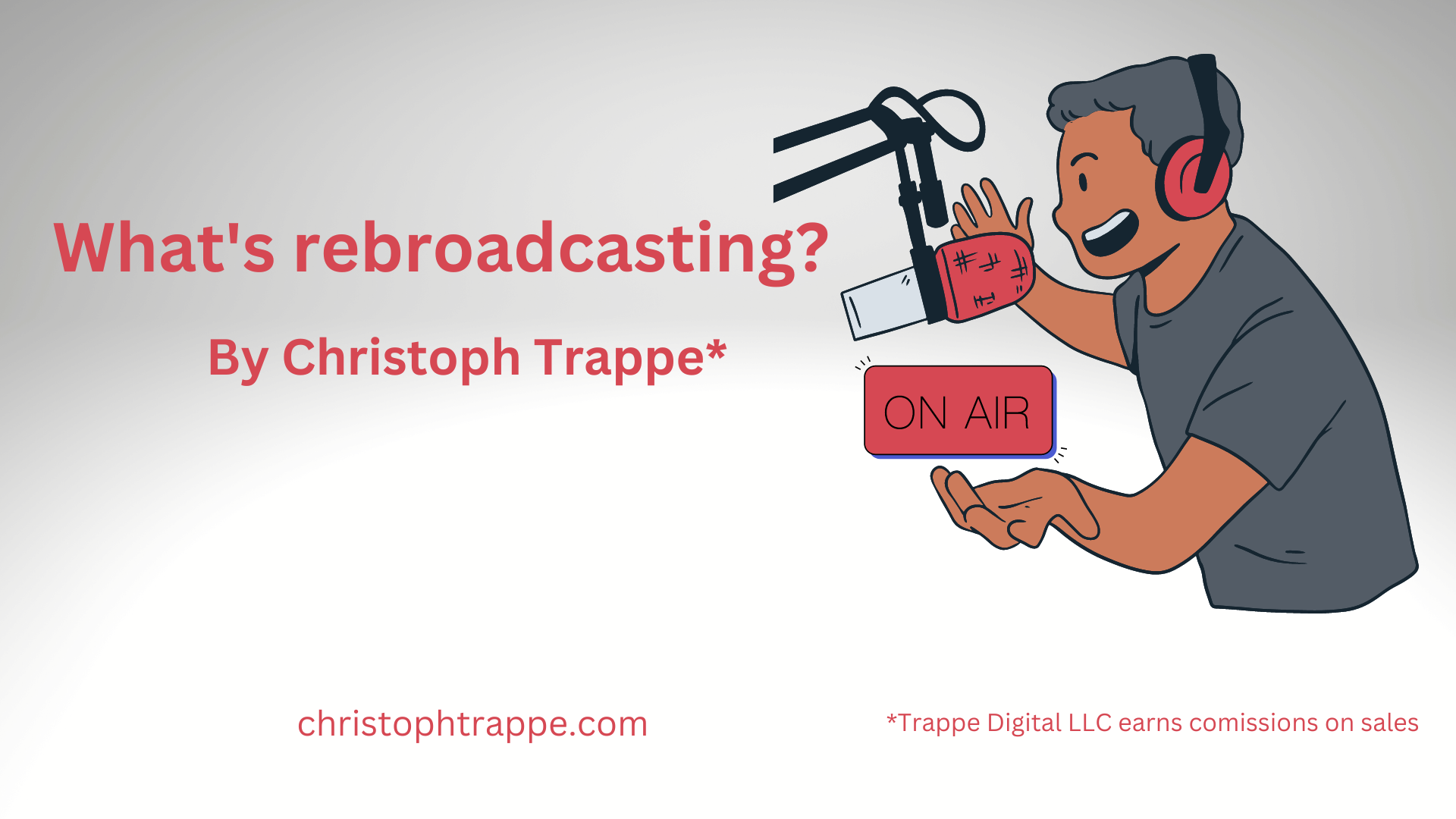Trappe Digital LLC may earn commissions from sponsored links and content. When you click and buy you also support us.
Going live with your podcast interviews is one way to maximize the reach of your show. Another way is to rebroadcast (aka restream) your episodes. And now that’s even possible on a loop. In this article, I discuss the following:
- What is rebroadcasting?
- How to decide what podcast episodes are worth rebroadcasting
- The steps to set up a rebroadcast and loop
- The equipment needed for a rebroadcast
What is rebroadcasting?
Rebroadcasting video or audio content isn’t new and originally comes from television and radio. Something was broadcast live, and when it gets shown again – the replay, so to speak, that’s the rebroadcast. Since TV and radio traditionally weren’t on-demand, that’s the way to see previously live shows again.
Read next: Share Your Message – The Benefits of a Video News Release
How does that work on social media?
The same concept can be used on social media podcast livestreams, though there are certainly differences. For one, when you go live on social media, the live stream is usually available as a replay as long as people return and find that post.
But now you can also replay a previous live video podcast as a new post and event. The advantage, in theory, would be that since it’s happening right now and shows in people’s feeds again, more people might see it again.
How to decide what podcast episodes are worth rebroadcasting
Since social media algorithms sometimes resurface content from a few days ago, using older episodes from a month or two ago might be a better idea than rerunning last week’s episode. See what episodes performed well a while back and restream them again now to give the content more legs.
You could also consider putting several episodes into one clip and running them on a loop. So let’s say you take five episodes, put them back to back and then loop that as your broadcast. So it’s not just the same episode looping 10 times but five episodes looping in the same order 10 times.
The steps to set up a rebroadcast and loop
If you use older episodes, the first challenge will be to save them somewhere you can easily find them. Consider a folder with all episodes and title them correctly. Maybe something like this:
Jan22GuestName
From there, go into the Restream software and upload the episode. You can also re-air episodes that were broadcast directly in Restream the last two weeks. But, I like to use the edited version for this distribution so I would have to upload.
My edited versions:
If you need help with editing of your live shows, find a video editor here.
Once uploaded into Restream, click on schedule and then:
- Add the headline
- Fill in description
- Set start date and time
- Determine how many times it should loop
For the title, I would recommend stating that it’s a re-air, similar to how I did that in this post.
Choose the networks where to stream and keep clicking forward.
The re-air episode will also appear in your dashboard, and you can see how long the loop will take. In this case, it’s over four hours.

The equipment needed for a rebroadcast
It does start with producing a good show. So consider having a good setup, including the following:
And, of course, make sure the guest also has a setup that allows for a good show. I even added a checkbox paragraph to my podcast scheduling form to remind guests of that:
Once an episode is complete, you can trim the video yourself or hire a freelance editor if you need more editing help. I would recommend a desktop or laptop computer to do all this, and the scheduling in Restream is also easier on those types of devices.
Read next: How to easily share livestream clips to social media
Final thoughts
- one more upload, which can happen in the background.
- copy and paste the headline and description
- re-use of the cover art
- Schedule
When the workflow is humming, that’s probably 15 minutes, plus the video’s upload time – but you don’t have to wait and sit there while it’s uploading.
It would be a bit more if you end up combining multiple episodes into one clip to loop them together.
Overall, I think it’s a strategy worth trying with some live-streamed content.



